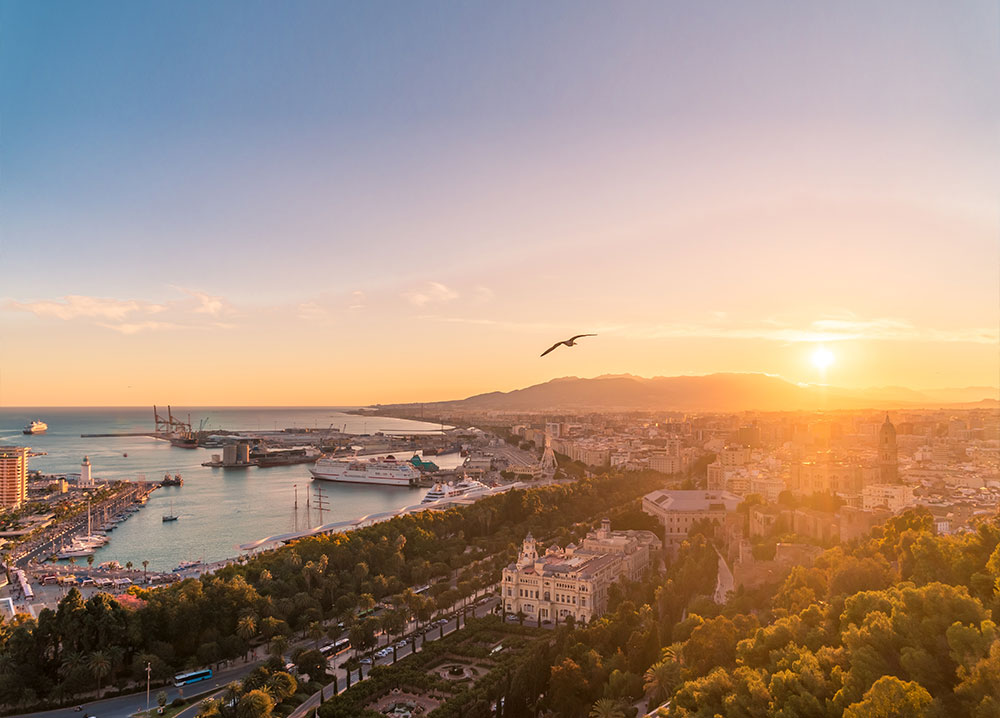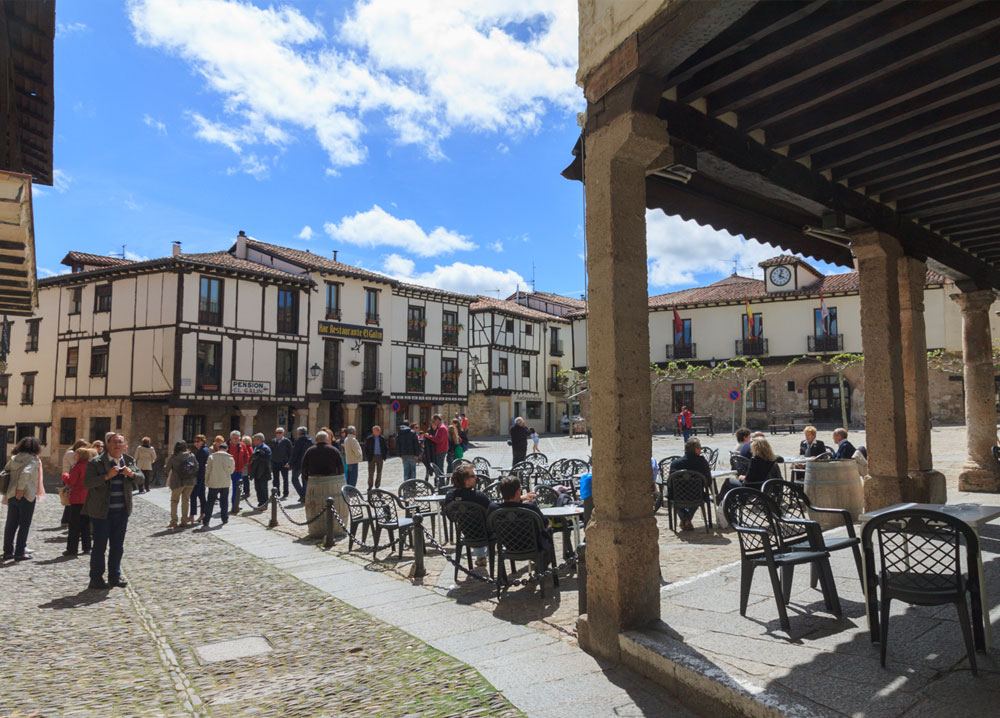Secret Trails of Medieval Spain

And everywhere you go, there are monuments to Spain’s vast history. This is a place where medieval fortresses lie atop Roman ruins and where Catholic cathedrals nestle next to jewels of Islamic architecture. These sites bear the indelible marks of the great civilisations that have risen and fallen within Spain’s borders. And amongst them, on the steep mountainsides, and in the green valleys, huddle the villages of timeless beauty that are the tenacious remnants of Old Spain.
The best way to see it all – the tremendous landscape, the grand monuments to history and the villages of Old Spain – is by walking amongst it. It’s clear why Spain is one of the world’s most iconic hiking destinations.
Medieval Spain
It was during this time that many Christians sought to close the distance between themselves and God by undertaking a physical journey – or pilgrimage – toward a spiritual end. In the 11th and 12th centuries, huge numbers of pilgrims flocked from all over Europe to the Santiago de Compostela in northern Spain, where the relics of the apostle Saint James the Greater were believed to have been discovered.
Many of these ancient pilgrims’ trails remain today and form a great part of the trail system a modern trekker will travel. As you hike along these ancient trails, you will be walking where religious travellers once did, and even if you aren’t on a spiritual journey, the beauty of Spain is a miracle itself.
And there are no places better for experiencing this intersection of superb hiking and medieval history than Rupit, Covarrubias and Salamanca.
The Medieval Village of Rupit in the Pyrenees
The Spanish Pyrenees of Catalonia is an outstanding region for those wanting to get out and explore nature. Forming the border between France and Spain these mountains play host to some of the most stunning scenery in a country known for its landscapes. Think of gorges filled with glasslike lakes, hiking trails hewn into rock faces and Romanesque churches dotted in nearly every mountain village you trek through.
Rupitis located in the Collsacabra area of the Pyrenees, one of Europe’s most famous natural wonders. Here you can follow ancient paths through forests of beeches and oaks, and spy wildlife such as vultures, eagles, newts, salamanders, honeyeaters, deer and badgers. Follow trails up to the natural plateau rising from the woods below, where you will see breathtaking views of the Susqueda reservoir. The trails also lead to the famous Salt de Sallent, the highest waterfall in Catalonia standing at 115 meters tall. Tumbling between soaring rock walls it is a sight not to be missed, particularly after rains.

Covarrubias and the Conjunto Histórico-Artístico Conservation Area
Approximately two hours from Madrid lies the medieval village of Covarrubias. Located in the province of Burgos, Covarrubias has been a draw for discerning travellers for decades. The village itself has been declared a conservation area, both because of its charming buildings and its medieval history, which includes the Doña Urraca Tower, a 10th century Mozarabic construction.
Covarrubias was founded in the 7th century by Visigothic king Chindasuinth and was one of the first areas to be reconquered by the Moors in the late 9th century. Part of its fame lies in the fact that the Princess Christina of Norway, Infanta of Castile, travelled from TØnsberg to Spain in 1257, and was later buried in Covarrubias.
Covarrubias lies in the valley of the river Arlanza, which is extensively wooded with Spanish Juniper and is a protected bird-life area, most famous as the home of the imposing griffon vulture. The hiking trails in this area are phenomenal. Follow them as they meander beside the Arlanza River through rocky gorges and wooded valleys and past medieval villages and remote hermitages.
Climb the hillsides surrounding Covarrubias to the top of the ridge, taking breaks at the Tenadas del Campo and the Tenadas de Valcarcel, and you are rewarded with a spectacular view of mount San Carlos. Don’t miss the stunning La YeclaGorge, especially after it rains, as the sound of the thundering waterfall echoing through the gorge is incredibly magnificent.
Another trail climbs through vineyards, forests and farmlands before ending in the lovely village of Retuerta. Or climb through the dense forests just outside of Covarrubias to the limestone ridges surrounding it and you can see awe inspiring views of the Sierra de la Demanda.
Salamanca and Sierra de Francia
In 220 B.C., Carthaginian general Hannibal and his famous battalion of 40 elephants laid siege to the pre-Roman city of Salmantica. This episode put Salamanca on the map but was only a pre-cursor of things to come. During the early middle ages, Salamanca, subject to constant attacks by the warring Moors and Christians, went into decline. But towards the end of the 11th century, French Count Raymond de Bourgogne settled there and began to restore declining buildings, including the Episcopal See in 1102, and building new ones, including a stunning cathedral. In 1218 the EstudiosGenerales (the General School), the precursor to the future university, was created.
Hiking in the Salamanca area is superb, if lesser known. The Sierra de Francia, a mountain range located at the southern end of Salamanca Province, has been declared a Biosphere Reserve by UNESCO. Its landscape of craggy mountains populated by masses of wooded slopes and valleys through which rivers and streams run, is not to be missed. Climb to the peak of La Hastiala, the highest point of the mountain range, or to La Peña de Francia, a plateau soaring above the forests below. At its top there is a shrine to the Blessed Virgin Mary, and breathtaking views of the surrounding countryside.
Las Batuecas, a valley located between Salamanca and the province of Cáceres, is one superb part of the Sierra de Francia area and is given its name from the river that winds through it. In this valley you can wander through forests of oaks, pines and chestnuts, and watch for a stunning variety of wildlife, including mountain goats, wild cats, badgers, lynx, marten, otter, roe deer and wild boar. Bring your binoculars to spy a glimpse of vultures, eagles, owls and peregrine falcons.
If you’d like more travel information, please don’t hesitate to contact our team on 1800 242 353.


